
ACKNOWLEDGEMENTS Thank you to the many friends and family members who so generously shared their recipes and hints with me. Thanks especially to Izak Barnard of Penduka Safaris without whom this book would never have been possible. And, as always, Im forever grateful to Johan for his continued love and support. Struik Lifestyle (an imprint of Random House Struik (Pty) Ltd) Company Reg. No. 1966/003153/07 Wembley Square, Solan Road, Cape Town 8001 PO Box 1144, Cape Town, 8000, South Africa First published in 2006 by Struik Publishers Reprinted in 2007, 2008, 2009, 2013 Copyright in published edition: Random House Struik (Pty) Ltd 2006 Copyright in text: Rita van Dyk 2006 Copyright in photographs: Random House Struik (Pty) Ltd 2006 ISBN 978-1-43230-306-8 (ePub) ISBN 978-1-43230-307-5 (PDF) ISBN 978-1-77007-227-5 (Print) All rights reserved.
No part of this publication may be reproduced, stored in a retrieval system or transmitted, in any form or by any means, electronic, mechanical, photocopying, recording or otherwise, without the prior written permission of the publishers and the copyright holders. PUBLISHER: Linda de Villiers MANAGING EDITOR: Cecilia Barfield EDITOR: Irma van Wyk DESIGNER: Beverley Dodd PHOTOGRAPHERS: Christoph and Diane Heierli INDEXER: Joy Clack CONTENTS PLANNING & PREPARATION As with any journey or expedition, preparing for a 4x4 safari is as exciting as going on the trip itself. However, it could end up being quite disastrous if you go unprepared, especially if youre new to camping. Planning and preparation are important. This is a comprehensive cooking guide for a trip in the great outdoors. Seasoned travellers will already be familiar with the various cooking methods, food, utensils and equipment that make a 4x4 safari a success.
Nevertheless, this guide, which comprises essential information and checklists, will come in handy and serve as an important source of information that newcomers to the bush will embrace. PACKING FOOD & EQUIPMENT PACKAGING Plastic bags are ideal for packaging dry mixes such as cereals, dried fruit, dried beans or nuts. They leave the contents visible from the outside. During very rough going they must be protected from abrasion and puncturing. The bags can be sealed with adhesive cellulose tape or a rubber band. Lightweight, unbreakable plastic bottles with screw tops are available for storing cooking oil and other liquids.
Wide-necked bottles can be used for storing margarine, which wont leak if the margarine turns soft in hot weather. Dont throw away the containers in which eggs are bought. Leave the eggs in their containers and pack them tightly and snugly into larger ones. As you use the eggs, place the empty cartons back in the bottom of the larger container so the remaining eggs dont shake around while travelling. Food and equipment should be packed in sturdy, square (easier to pack than round ones) trunks to withstand the rigours of rough travelling. Wrap breakables such as glasses in plastic bubble wrap (obtainable from stationery shops) instead of newspaper, which becomes soggy when wet.
HOW MUCH OF EACH? No one can tell you how much to take of a certain item. It all depends on the number of meals you expect to make of each kind of food, how many people are in the party and how much of each particular nutriment it will take to make a satisfying portion for each person. To determine quantities, you should experiment during weekend camping trips, preferably with the people who will be going on safari with you. Remember, the success of a safari depends on how well it is planned. CANS Use a water-resistant pen to write the contents on the tops of cans in case the labels are washed off in the rain. Instead of puncturing the lids of cans such as evaporated milk, make small openings on opposite sides just below the rim.
They can then be sealed easily with a wide elastic band to prevent the contents from spilling when you travel (i.e. from the campsite to a picnic spot). Do not keep leftovers in an opened can; transfer the contents to a plastic container instead. THE LUNCHBOX It is useful to pack a lunchbox before breaking camp in the morning. Pack the kettle, fire grid (or gas bottle), etc. so that they are easily accessible during the lunch stop or tea break.
Easier still, prepare coffee or tea in a thermos flask, but be aware that this will most probably be finished before lunchtime! Sandwiches, fruit and a salad make a light but satisfying lunch. Pack extra fruit and a box of biscuits in the vehicle for snacks, as well as a bottle of fresh water for each person. Also keep a clean rubbish bag in the vehicle to hold litter. To keep the lunchbox cool and to have water available for sundowners, freeze a 1-litre bottle (the ones in which you buy milk or fruit juice) of water overnight and use instead of ice packs. They stay frozen for longer, and when they defrost you have ice-cold water to drink. FATS Take along margarine and not butter, as milk-based products quickly turn rancid in hot weather.
Hard margarine will also keep better than soft margarine, but if a cool box or refrigerator is available, this need not be a consideration. EQUIVALENTS The following list shows the equivalent weight in grams or millilitres of 1 cup of a particular food:
| Beans, dried | 250 g |
| Cheese, grated | 125 g |
| Cocoa | 111 g |
| Coconut, desiccated | 75 g |
| Cornflour | 166 g |
| Margarine | 250 g |
| Mealie meal, unsifted | 166 g |
| Milk | 250 ml |
| Oats | 91 g |
| Plain (cake) flour | 125 g |
| Raisins | 188 g |
| Rice, uncooked | 250 g |
| Sugar, white | 250 g |
| Water | 250 ml |
SUBSTITUTES 1 teaspoon baking powder = teaspoon bicarbonate of soda plus teaspoon cream of tartar 1 cup buttermilk = 1 tablespoon vinegar (or lemon juice) in 1 cup milk. Let stand for 5 minutes 1 tablespoon flour = tablespoon cornstarch 1 cup honey = cup sugar and cup water 1 cup milk = cup evaporated milk and cup water 1 cup evaporated milk = 1 cup full-cream milk Quick prepared mustard: Combine equal amounts of mustard powder and mayonnaise. Dry-fry onions and other food (without oil or margarine): Combine 1 teaspoon stock powder with cup boiling water and cup white wine in a jug. Heat a heavy-bottomed pan over moderate heat and add the onions. Cook for about two minutes or until the onions have visible brown patches.
Stir continuously. Pour in about 2 tablespoons of the stock mixture and continue to stir. When most of the liquid has evaporated, add another two tablespoons. Repeat the process until the onions are nice and brown. Add the remaining stock and stir until the sauce has been reduced. (Acknowledgement: The X-Diet Cookbook, Tabitha Hume, Struik Publishers) Mock whipped cream: cup margarine; 1 tablespoons sugar; 1 teaspoon gelatine dissolved in 3 tablespoons boiling water; teaspoon vanilla essence.
Beat the sugar and butter together, then add the hot, dissolved gelatine and vanilla essence. Beat vigorously for 5 to 10 minutes. Handy Hint: This has nothing to do with food but is a handy hint anyway. When lions roar around the camp, youre sure to need the toilet! Keep a large plastic bowl with a lid in your tent exclusively for this purpose. Even better, look for the Wee-Jon disposable urinals in pharmacies and aviation shops at airports. These nifty devices work for men and women and can absorb approximately 500 ml of fluid.

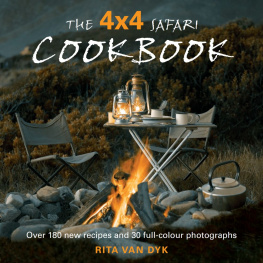
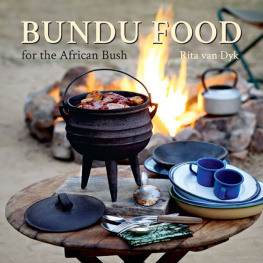
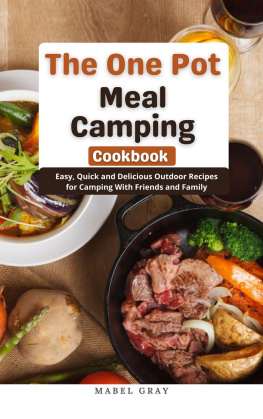

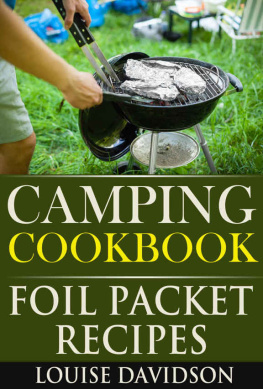
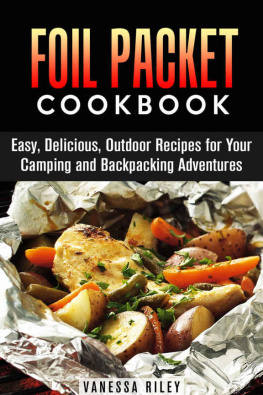
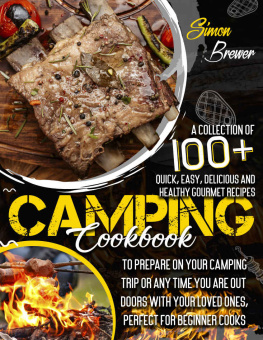
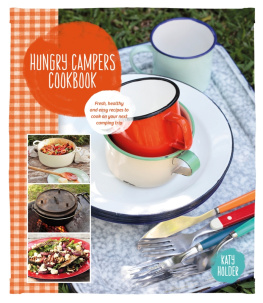


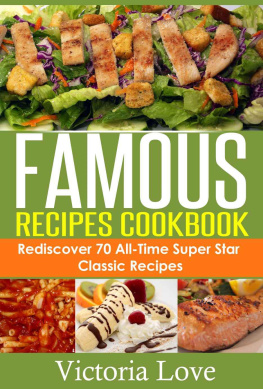

 ACKNOWLEDGEMENTS Thank you to the many friends and family members who so generously shared their recipes and hints with me. Thanks especially to Izak Barnard of Penduka Safaris without whom this book would never have been possible. And, as always, Im forever grateful to Johan for his continued love and support. Struik Lifestyle (an imprint of Random House Struik (Pty) Ltd) Company Reg. No. 1966/003153/07 Wembley Square, Solan Road, Cape Town 8001 PO Box 1144, Cape Town, 8000, South Africa First published in 2006 by Struik Publishers Reprinted in 2007, 2008, 2009, 2013 Copyright in published edition: Random House Struik (Pty) Ltd 2006 Copyright in text: Rita van Dyk 2006 Copyright in photographs: Random House Struik (Pty) Ltd 2006 ISBN 978-1-43230-306-8 (ePub) ISBN 978-1-43230-307-5 (PDF) ISBN 978-1-77007-227-5 (Print) All rights reserved.
ACKNOWLEDGEMENTS Thank you to the many friends and family members who so generously shared their recipes and hints with me. Thanks especially to Izak Barnard of Penduka Safaris without whom this book would never have been possible. And, as always, Im forever grateful to Johan for his continued love and support. Struik Lifestyle (an imprint of Random House Struik (Pty) Ltd) Company Reg. No. 1966/003153/07 Wembley Square, Solan Road, Cape Town 8001 PO Box 1144, Cape Town, 8000, South Africa First published in 2006 by Struik Publishers Reprinted in 2007, 2008, 2009, 2013 Copyright in published edition: Random House Struik (Pty) Ltd 2006 Copyright in text: Rita van Dyk 2006 Copyright in photographs: Random House Struik (Pty) Ltd 2006 ISBN 978-1-43230-306-8 (ePub) ISBN 978-1-43230-307-5 (PDF) ISBN 978-1-77007-227-5 (Print) All rights reserved.